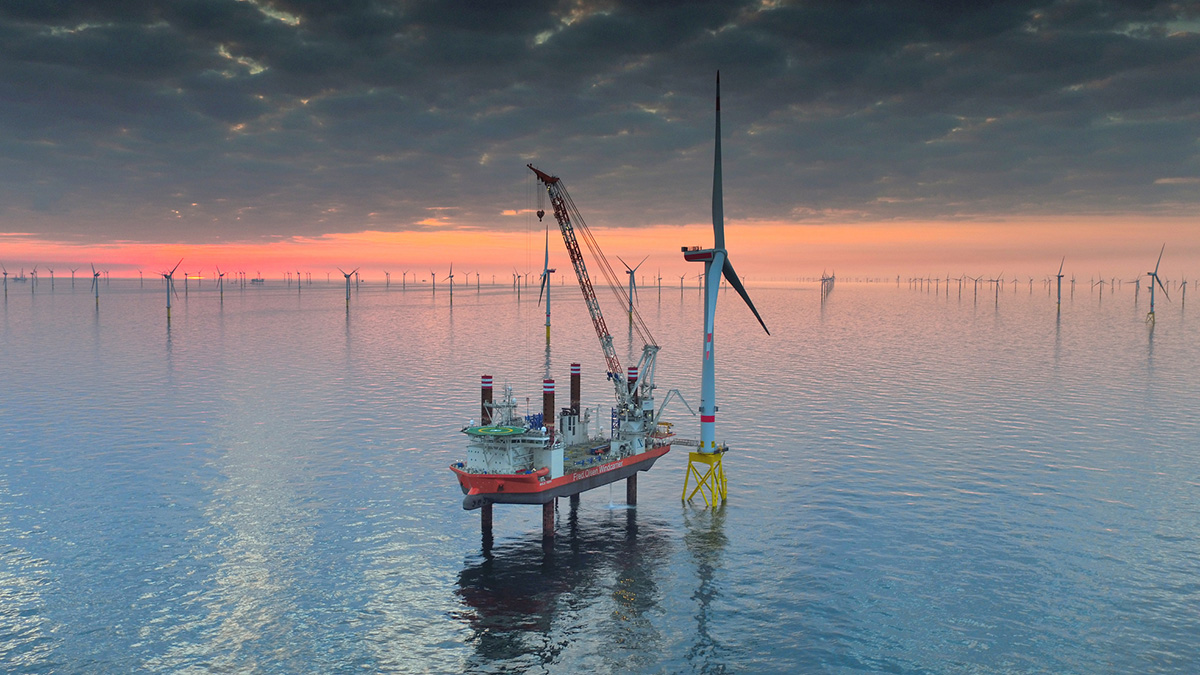18 April 2023
France makes progress on offshore wind, bottlenecks remain for onshore wind. Now needs to speed up both

France just selected the company that will build the country’s largest offshore wind farm. And it’s planning to award more offshore wind farms this year and next. But bottlenecks remain for onshore wind development, which need to be fixed as soon as possible. Crucially France needs to accelerate the annual buildout of both offshore and onshore wind farms to meet its targets.
On 27 March the French Government designated the winner of the fourth offshore wind tender off the coast of Normandy (‘Centre Manche 1’). A consortium formed by EDF Renouvelables and Maple Power will build the country’s largest offshore wind farm to date, with a capacity of 1 GW. That’s enough to power 800,000 homes. The process started in 2020 with a public consultation on a much wider area, followed by a competitive dialogue in 2021. The project was awarded at a tariff of €44.9/MWh, excluding grid connection.
The ‘Centre Manche 1’ wind farm comes after the development of other offshore wind farms in the Channel: Fécamp, Courseulles, Dieppe-Le Tréport and Saint-Brieuc. It will help reinforce the local socio-economic fabric, in line with the Offshore Wind Pact signed between the French Government and the wind industry in March 2022. The wind energy supply chain already has a strong footprint in Normandy: Siemens Gamesa produces blades and nacelles for offshore wind turbines in Le Havre, and General Electric produces offshore turbine blades in its factory in Cherbourg. The Government is set to pass a Green Industry Bill in the coming months to support the supply chain and facilitate its growth.
The new ‘Centre Manche 1’ wind farm will help further decarbonising France’s energy mix, increase energy security and contribute positively to the economy. France wants to have 50 offshore wind farms operating by 2050. In February it adopted its first Renewable Energy Law, aimed to accelerate the development of renewables, such as wind energy. Now France must speed up processes even further, based on integrated and comprehensive maritime special planning, and reduce delays. Between June 2019 and March 2023 France hasn’t awarded any offshore tenders. If it wants to meet its offshore wind target it will have to award at least 2 GW of new projects every year.
Meanwhile onshore wind is stalling: the latest French onshore wind auction was supposed to add nearly 1 GW of capacity – twice the capacity of France’s first operational offshore wind farm, in Saint Nazaire. But only 4 projects were awarded out of 60 that had bid into the auction. The successful bids have a total capacity of 56 MW. That’s only around 5% of the auctioned volume. This massive undersubscription was caused by a “lack of conformity” of most applications, due to unclear instructions by the administration. The Government wants to open a new catch-up tender in May to make up for the flop. More than ever, it’s key that the authorities in charge of processing the applications do it swiftly. And critically, more human resources need to be allocated to these authorities, in order to avoid this type of blunder in the future.

